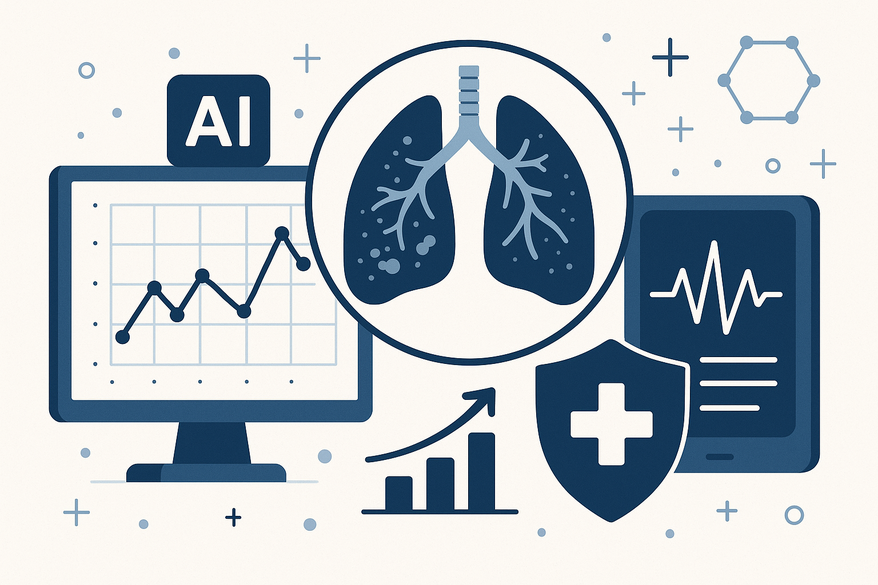Decoding Rash Trends from AI Reports for Enhanced Healthcare Insights
Explore rash trends from AI reports to enhance healthcare with early disease detection and efficient resource allocation through actionable insights.

Estimated reading time: 7 minutes
Key Takeaways
- AI-driven rash trend analysis enables early outbreak detection and targeted resource allocation.
- Integration of clinical, molecular, and environmental data sources improves trend accuracy.
- Seasonal, geographical, and demographic patterns guide precision interventions.
- Explainability and dataset diversity are crucial for equitable AI performance in dermatology.
Table of Contents
- 1. Understanding Rash Trends from AI Reports
- 2. The Role of AI Reports in Rash Trend Analysis
- 3. Key Trends Observed via AI Reports
- 4. Benefits and Limitations of Using AI for Rash Trend Analysis
- 5. Future Perspectives and Predictions on Rash Trends from AI Reports
- Conclusion
- FAQ
Understanding Rash Trends from AI Reports
Rash trends are patterns or shifts in skin eruption cases detected over time or across regions. By tracking these trends, healthcare teams can uncover hidden health dynamics and act promptly.
- Definition: Consistent increases or decreases in rash incidence within a specific timeframe or location.
- Health dynamics: Trends often reflect infections, allergy cycles, or environmental hazards.
- Example: In spring, AI correlates clinical records and cream sales to reveal a 40% spike in atopic dermatitis among children, prompting clinics to stock antihistamines and emollients.
Source: Springer study on rash trends
The Role of AI Reports in Rash Trend Analysis
AI reports harness advanced algorithms and diverse data streams to detect and interpret rash patterns with unrivaled speed and precision.
Data Sources & Collection Methods
- Clinical images: Deep learning models analyze skin lesion photos for color, texture, and shape.
- Electronic health records (EHR): Machine learning scans notes, labs, and prescriptions for unusual clusters.
- Laboratory markers: Biomarker levels feed predictive algorithms.
- Patient history: NLP mines doctors’ notes and surveys for rash descriptions.
- Social media & sensors: NLP parses posts; sensors log pollen, humidity, and pollution.
Algorithmic Analysis
- Integration: Combines genetic, environmental, and clinical data for holistic insights.
- Pattern recognition: Learns from labeled examples to spot early dermatological signs.
- Risk stratification: Assigns scores based on comorbidities, exposure history, and demographics.
Speed & Precision
- Real-time processing: Continuous analysis of EHR entries and sensor feeds.
- Timely alerts: Automated notifications alert clinicians to rising trends within minutes.
- Reduced errors: Context-aware image segmentation improves sensitivity and lowers false positives.
Learn more about how AI diagnoses rashes in clinical settings
Key Trends Observed via AI Reports
AI-driven surveillance reveals actionable patterns across seasons, regions, and demographics.
Seasonal Variations
- Spring & fall peaks: Pollen-driven atopic dermatitis surges when outdoor allergens climb.
- Summer rashes: Heat rash and fungal infections spike in hot, humid climates.
- Winter flares: Dry indoor air worsens eczema, driving more clinic visits.
Geographical Hotspots
- Coastal regions: High humidity correlates with fungal and heat rash cases.
- Polluted cities: Poor air quality links to contact dermatitis flare-ups.
- Agricultural zones: Pesticide exposure increases contact dermatitis among workers.
Demographic Influences
- Age groups: Infants and young children exhibit higher eczema rates.
- Ethnic predispositions: Darker skin types show unique rash morphologies.
- Genetic markers: Certain HLA types link to increased rash susceptibility.
Case Study 1: Pediatric Atopic Dermatitis in Japan
- Dataset: 5,000 children over two years.
- Finding: Elevated CCL17 chemokine levels predict eczema flares.
- Impact: Targeted moisturizers and antihistamines reduced severe flare-ups by 30%.
Case Study 2: Predicting Skin Infection Spread
- Model: Combined clinic reports, weather data, and population density.
- Result: Weekly heat maps predicted staphylococcal outbreak zones.
- Outcome: Hygiene campaigns and stewardship cut infection rates by 20%.
Benefits and Limitations of Using AI for Rash Trend Analysis
Advantages
- Real-time surveillance accelerates outbreak response.
- Multidimensional data integration yields deeper insights.
- Predictive capabilities enable early interventions.
- Scalable monitoring supports population health in resource-limited areas.
Challenges
- Data quality issues: Incomplete or biased inputs may skew results.
- Interpretability gaps: Clinicians need transparent AI reasoning.
- Bias and generalizability: Models must be trained on diverse populations.
Future Perspectives and Predictions on Rash Trends from AI Reports
- Explainable AI: Techniques that clarify model decisions will build clinician trust.
- Diverse training sets: Inclusion of varied skin types and regions will boost accuracy.
- Machine learning in skin analysis advances will refine pattern detection.
- Wearables & telemedicine: Continuous skin monitoring and virtual visits will supply rich data streams.
- Predictive analytics: Forecasts will guide vaccine drives and resource planning weeks in advance.
Conclusion
AI-powered rash trend analysis is transforming public health and clinical practices. By tracking seasonal spikes, geographic hotspots, and demographic factors, AI delivers real-time surveillance and predictive insights that traditional methods cannot match. While benefits include rapid detection and scalable monitoring, challenges such as data bias and interpretability require careful attention. As AI evolves toward greater transparency and personalization, healthcare professionals and policymakers must stay engaged with these insights to drive proactive interventions, optimize resource use, and improve patient outcomes.
FAQ
- What is a rash trend? A rash trend is an observed pattern or shift in skin eruption cases over time, geography, or population groups, detected through data analysis.
- How does AI improve rash trend detection? AI integrates clinical images, EHR data, biomarkers, and environmental feeds to identify subtle patterns, generate real-time alerts, and stratify risk more accurately than manual methods.
- Which data sources power AI dermatology reports? Key sources include deep learning analysis of clinical photos, EHR mining, laboratory marker levels, patient histories via NLP, and environmental sensors or social media posts.
- What are the main challenges of AI-based rash analysis? Challenges include ensuring data quality, interpreting “black box” outputs, and avoiding biases by training on diverse skin types and demographics.






